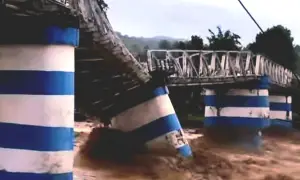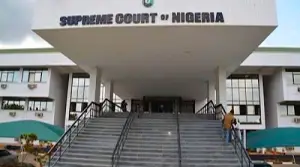Over 151 people have been confirmed dead following devastating floods that swept through Niger State on Wednesday night, with authorities warning the death toll could rise as search and rescue operations continue.
The disaster comes after the Nigerian Meteorological Agency (NiMET) had issued several flood alerts earlier this year, specifically warning that about 13 Northern states would experience massive floods in 2025. The agency had cautioned that "high-intensity rainfall is expected in May to June that may likely result in flash floods in the coastal cities."
The Federal Government, through the Minister of Water Resources, Prof. Joseph Utsev, had also identified 1,249 towns across 176 local governments in 30 states, including parts of the FCT, as flood-prone areas. These states include Abia, Adamawa, Akwa Ibom, Anambra, Bauchi, Bayelsa, Benue, Borno, Cross River, Delta, Ebonyi, Edo, Gombe, Imo, Jigawa, Kebbi, Kogi, Kwara, Lagos, and Nasarawa. Others are Niger, Ogun, Ondo, Osun, Oyo, Rivers, Sokoto, Taraba, Yobe, Zamfara, and the Federal Capital Territory.
Experts Question Government Response
Speaking with DAILY POST, Umar Sale Anka, a council member of the Institute of Environmental Practitioners of Nigeria (IEPN), criticized the government's response to the disaster in Mokwa, Niger State.
"Despite early warnings from NiMet and NIHSA, responses were slowed by a lack of institutional memory, limited resources, manpower shortages, and inadequate budget releases, especially at the state level," Anka said.
He highlighted how deforestation has eliminated natural barriers that once absorbed excess rainfall, allowing water to rush through settlements with devastating force. Anka also noted that insecurity often blocks access to affected areas, making it difficult for humanitarian groups and technical experts to provide support.
"Cultural beliefs and traditional attachment to ancestral land further complicate resettlement efforts. Many families, even when warned, are reluctant to leave their homes due to deep-rooted ties to their land, grave sites of ancestors, and sacred spaces," he added.
Kano State's Preventive Measures
Meanwhile, Kano State Emergency Management Agency (SEMA) has confirmed it is collaborating with the National Emergency Management Agency (NEMA) to prevent flood disasters as the rainy season begins.
SEMA Executive Secretary, Isyaku Kubarachi, confirmed that floods have already affected parts of Madobi, Shanono, and Tudun Wada in Kano State. He told DAILY POST that stakeholder meetings have been scheduled to address the issue, though he did not provide specific details about preventive measures being implemented.
The Nigeria Hydrological Services Agency (NIHSA) has also warned about the possibility of dams reaching overflow levels, which is particularly concerning for Niger State, home to the Shiroro and Kainji dams that have caused downstream flooding in previous years.
As the rainy season intensifies, questions remain about whether federal and state governments are taking sufficient proactive measures to mitigate the impact of floods and protect vulnerable communities across Nigeria.













